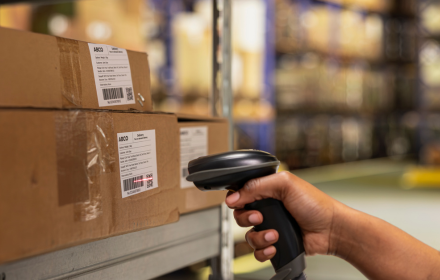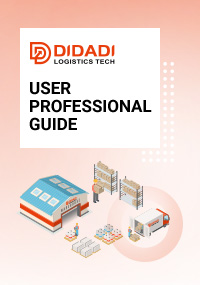EXW vs FOB vs DDP: Which Is Best for Amazon FBA Shipping from China?

When sourcing products from China and shipping them to Amazon FBA, the trade term you choose — DDP, FOB, or EXW — shapes your cost structure, logistics responsibilities, shipping timeline, compliance risks, and even your long-term scalability as a seller.
Many new Amazon sellers choose trade terms based on what their supplier suggests, not realizing that each term changes who controls the shipment, who pays for what, and who takes responsibility at each step of the supply chain.
To help you make an informed decision, this guide breaks down DDP, FOB, and EXW in depth, showing how each works, what risks they carry, and which type of seller benefits the most from each option.
Before comparing them, it’s essential to understand the core concept of what each term means.
EXW (Ex-Works)
You take responsibility from the supplier’s door.
You arrange pickup, export customs, shipping, duties, taxes, and FBA delivery.
FOB (Free on Board)
The supplier gets the goods to the loading port and clears export.
You handle freight, import customs, and final delivery.
DDP (Delivered Duty Paid)
You pay a flat rate and your forwarder handles everything door-to-door.
Pickup, export, freight, customs, duties, and delivery are all included.
Each term puts responsibility on different parties — and Amazon sellers must choose one based on their experience, shipment volume, and supply chain strategy.
With EXW, your supplier’s only obligation is to make the goods available at their factory. Everything else falls on you and your freight forwarder.
Benefits of EXW
Full visibility into each logistics cost (pickup, export, freight, customs, delivery).
You control the forwarder, not the supplier — fewer surprises.
Easier to standardize shipping if you work with multiple suppliers.
Ideal for sellers who want tighter control of their supply chain.
Challenges of EXW
You must manage more steps: factory pickup, export paperwork, consolidation.
If your supplier lacks export licenses, extra steps may be required.
Not ideal for beginners who don’t understand Chinese logistics.
Best for Amazon sellers who…
Have stable volume.
Want transparency and consistency.
Prefer to avoid supplier-controlled logistics.
Are scaling a long-term brand.
EXW gives you power — but you must know how to use it.
FOB is often considered the “middle-ground” trade term. The supplier is responsible for delivering the goods to the port, clearing export, and loading them onto the vessel or plane. After that, responsibility shifts to you and your forwarder.
Benefits of FOB
The supplier handles everything inside China until goods leave port.
You still control freight, customs, and FBA delivery using your own forwarder.
Lower risk of inflated shipping rates from suppliers.
Clear division of responsibilities reduces confusion.
Challenges of FOB
You still need a capable forwarder to avoid delays or hidden destination fees.
Port handover sometimes creates communication gaps if managed poorly.
Best for Amazon sellers who…
Want balance between control and convenience.
Ship regularly but don’t want to micromanage every detail.
Prefer predictable pricing and clean responsibility handoffs.
FOB remains the most popular choice for professional Amazon sellers.
DDP means your forwarder handles everything from the supplier’s door to Amazon FBA. This includes pickup, export clearance, shipping, customs, duty payment, and final delivery.
Benefits of DDP
One simple price, no logistics management required.
No need to worry about duties, taxes, or customs clearance.
Perfect for beginners or sellers shipping small volumes.
Great for small parcels or urgent replenishment.
Challenges of DDP
Some sellers misunderstand how duties are handled, leading to compliance issues.
Improper DDP services can cause customs holds, fines, or shipment returns.
Not all DDP offers include proper Amazon-compliant final delivery.
Some “cheap DDP” services use risky clearance methods, which Amazon sellers must avoid.
Best for Amazon sellers who…
Are new and need simplicity.
Ship small or medium-size cargo.
Want predictable total landed cost.
DDP is convenient, but choosing the wrong provider creates more risk than the convenience is worth.
Below is a detailed conceptual comparison to help you choose:
Control Level
Highest: EXW
Medium: FOB
Lowest: DDP (but easiest)
Workload
Highest: EXW
Medium: FOB
Lowest: DDP
Risk Exposure
Highest: EXW (export & origin risks)
Medium: FOB
Varies: DDP (risk depends on forwarder quality)
Cost Visibility
Highest: EXW
Medium–High: FOB
Lowest: DDP (bundled cost)
Best For
EXW: Experienced sellers, multi-supplier sourcing.
FOB: Most sellers, especially growing brands.
DDP: New sellers or low-volume shipments.
Choosing the right trade term depends on the following factors:
1. Your Experience Level
Beginners often choose DDP for simplicity.
Intermediate sellers choose FOB for balance.
Advanced sellers choose EXW to standardize supply chains.
2. Your Shipment Size
Small parcels → DDP
Medium shipments → FOB
Large regular shipments → EXW or FOB
3. Your Factory Relationship
If you do not fully trust your supplier or they inflate logistics costs, avoid supplier-arranged DDP and supplier-chosen freight.
4. Your Amazon FBA Preparation Needs
If you need consolidation, multiple-supplier pickup, or consistent China-side handling, EXW and FOB give you more control over the service provider.
5. Your Need for Transparency
Sellers who track cost structure carefully should avoid all-inclusive supplier DDP quotes because it's harder to understand how your landed cost is formed.
Mistake 1: Letting suppliers choose the shipping method
This often leads to inflated costs, risky routing, or poor compliance.
Mistake 2: Choosing DDP only because it's “easier”
Not all DDP is compliant. Some sellers unknowingly break import rules because they selected the cheapest option.
Mistake 3: Using EXW without understanding China domestic logistics
Factory pickup, export licensing, or origin paperwork can cause delays if mishandled.
Mistake 4: Treating all forwarders as the same
Trade term choice is only effective if the forwarder you work with is competent.
There is no universal answer — it depends entirely on your Amazon business model.
But here is the practical guideline most successful sellers follow:
New Sellers: DDP
Growing Sellers: FOB
Large/Experienced Sellers: EXW (or FOB, for efficiency)
This progression mirrors the growth of most ecommerce brands.
Choosing between DDP, FOB, and EXW is not simply a logistical decision — it is a business strategy.
Your trade term determines your supply chain’s stability, cost structure, and risk exposure. The right choice depends on how much control you want, how much experience you have, and how much transparency you need.
For sellers looking for reliable China-to-Amazon logistics support, DIDADI Logistics provides structured, compliant shipping solutions under all three trade terms, helping importers manage supplier pickup, freight routing, customs coordination, and Amazon warehouse delivery with clarity and operational consistency.
A strong trade term is the first step in building a strong supply chain — and your logistics partner plays a major role in making that system work.
Recommended Reading















